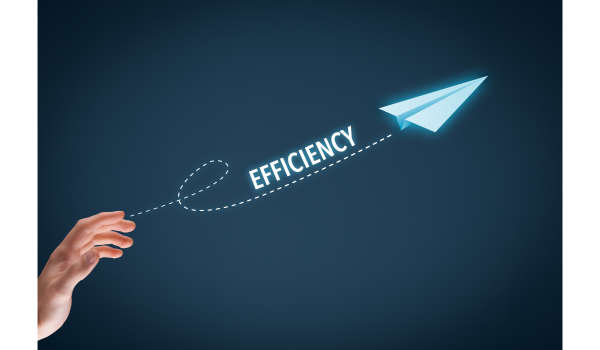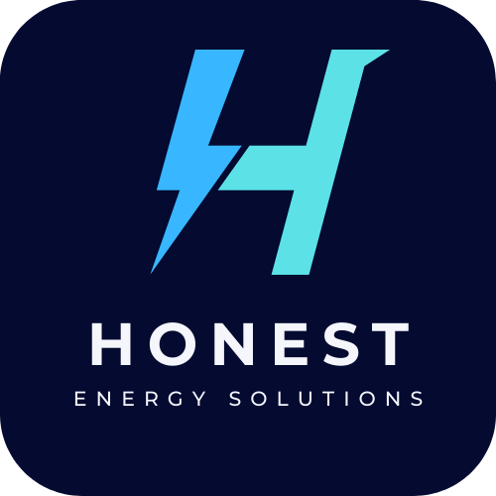Welcome back to our Energy Management Series, where we embark on a journey to empower your business...
Understanding Energy Audits: A Step-by-Step Guide
If you're looking to make your home or business more energy-efficient, the journey begins with a fundamental step: an energy audit. This comprehensive examination of your energy consumption is the key to identifying areas where you can save money, reduce waste, and decrease your environmental footprint. In this step-by-step guide, we'll walk you through the process of conducting an energy audit, emphasizing the importance of this initial step in your energy efficiency journey.
Why Are Energy Audits Important?
Energy audits are a vital tool for several compelling reasons, and their significance extends far beyond simple cost savings. Let's delve deeper into why energy audits are an essential component of enhancing energy efficiency in both homes and businesses.
Cost Savings
The most immediate and tangible benefit of energy audits is the potential for significant cost savings. By pinpointing areas of energy waste, you can identify precisely where you are overspending on energy. For homeowners, this translates to reduced utility bills, providing a welcome relief to your monthly budget. For businesses, energy audits help in optimizing resource allocation, leading to lower operational costs.

Energy audits reveal areas where energy is being used inefficiently or unnecessarily, allowing you to take corrective actions. These adjustments can range from simple behavioral changes to more complex upgrades, all with the overarching goal of reducing energy consumption and, consequently, your energy bills.
Environmental Impact
For those who are environmentally conscious, energy audits contribute significantly to a more sustainable future. Reducing energy consumption directly translates to a lower carbon footprint. By using less energy, you not only lower your own emissions but also contribute to the broader goal of mitigating climate change and conserving valuable natural resources.

In a world where environmental conservation is of paramount importance, energy audits empower individuals and businesses to actively participate in this global effort. By optimizing your energy use, you play a part in reducing the negative impacts of energy production on the environment, such as greenhouse gas emissions and resource depletion.
Efficiency Gains
Energy audits are all about discovering opportunities for improving energy efficiency. This is not just about reducing energy consumption but also making your home or business more comfortable, functional, and future-ready.

Energy audit results can highlight inefficient equipment, appliances, and systems that may be draining both your budget and the planet's resources. By implementing changes based on these results, you not only save money but also enhance the quality of life and operations in your space. These efficiency gains can lead to more comfortable indoor environments, improved productivity in businesses, and a better overall experience.
A Step-by-Step Guide to Conducting an Energy Audit:
To maximize the benefits of energy audits, it's important to understand the process and approach it systematically. Here's a step-by-step guide to conducting an energy audit:
1. Preparation:
Start by collecting and organizing your utility bills, as well as any additional information related to your energy consumption. This initial step provides a baseline for understanding your energy use, enabling you to track progress as you make changes.
2. Assess Your Building Envelope:
Begin with a visual inspection of your home or business. Look for gaps, cracks, or signs of poor insulation that might contribute to energy loss. The building envelope, which includes walls, roofs, windows, and doors, plays a critical role in maintaining energy efficiency. Identifying and addressing issues here can have a profound impact on energy savings.
3. Check Your Lighting:
Review your lighting systems, as they are a significant contributor to energy consumption. Ensure you're using energy-efficient bulbs, such as LEDs, which consume less energy and have longer lifespans. Consider adding motion sensors or timers in areas with less frequent foot traffic to reduce unnecessary lighting usage.
4. Evaluate Appliances:
Take stock of your appliances and their energy consumption. Look for ENERGY STAR-rated devices, which are designed to be more energy-efficient. When it's time to replace outdated, energy-hungry models, opt for energy-efficient alternatives. Upgrading to modern, eco-friendly appliances can lead to substantial savings.
5. Inspect Heating and Cooling Systems:
Heating and cooling systems are among the most significant energy consumers in homes and businesses. Schedule professional maintenance for these systems to ensure they are operating at peak efficiency. Consider upgrading to energy-efficient units, as modern technologies offer improved performance and reduced energy consumption.
Scroll to continue...

Contact us!
For a Cost Review and Energy Audit Today
6. Examine Windows and Doors:
Drafts caused by gaps and cracks around windows and doors are major contributors to energy waste. Sealing these openings with weatherstripping can prevent warm or cool air from escaping. This helps your home or business maintain a more stable temperature, which in turn reduces the workload on your HVAC system. Proper insulation in these areas is key to improving energy efficiency.
7. Assess Insulation:
Inspect the insulation in your attic, walls, and floors. Adequate insulation is crucial for maintaining a consistent indoor temperature. Insulation acts as a barrier to heat flow, preventing heat from escaping in the winter and entering in the summer. Improved insulation ensures a more comfortable living or working environment and reduces the need for frequent heating and cooling, ultimately leading to lower energy costs.
8. Check for Phantom Loads:
Many electronics and devices draw power even when turned off, a phenomenon known as phantom power consumption. To address this issue, use smart power strips and unplug devices when they're not in use. These power strips automatically cut off power to devices in standby mode, preventing energy wastage and reducing your electricity bills.
9. Analyze Water Usage:
Consider your water usage patterns and how they impact your energy bills. Did you know that nearly 90% of the energy used by your washing machine goes into heating water? By switching to cold water for laundry, you not only save energy but also extend the life of your clothing. Additionally, fixing water leaks and practicing water conservation can have a positive impact on your bills and the environment.
10. Conduct a Blower Door Test:
For a more thorough evaluation, consider a blower door test. This professional test pressurizes your home or business to identify air leaks and pinpoint areas of significant energy loss. While this may be a more advanced step, it provides precise data on where your property is losing energy and allows for targeted improvements.
Taking Action:
After completing your energy audit, you'll have a detailed understanding of your energy consumption and areas where improvements are needed. Now, it's time to take action. Use the audit results to create an action plan for enhancing energy efficiency. Here's how you can approach it:
-
Prioritize Changes: Start by identifying the changes that will have the most significant impact. For example, if the audit highlighted that your home loses a lot of heat through uninsulated windows, addressing this issue should be a top priority.
-
Set Goals: Establish clear, achievable goals based on your audit results. This could include reducing your energy bills by a certain percentage, lowering your carbon footprint, or making your living or working space more comfortable.
-
Budget and Plan: Determine the budget and timeline for implementing the recommended changes. Some upgrades may require a more substantial investment, such as replacing an old heating system, while others, like sealing leaks, may be more budget-friendly.
-
Engage Professionals: For complex tasks, such as HVAC system upgrades or blower door tests, it's often best to engage professionals with expertise in energy efficiency. They can ensure that the work is done correctly and that you achieve the desired results.
-
Monitor and Adjust: Once you've made the necessary changes, it's essential to monitor their impact. Keep track of your energy bills and note any differences in comfort or efficiency. Adjust your plans as needed to fine-tune your energy-saving efforts.
Energy audits are the starting point for any energy efficiency journey. They provide valuable insights into energy consumption, cost-saving opportunities, and sustainability benefits. By following this step-by-step guide and implementing recommended changes, you can make your home or business more energy-efficient and environmentally responsible.
Energy audits empower individuals and organizations to take charge of their energy use, reduce costs, and contribute to a more sustainable and eco-friendly future. These changes don't require a major overhaul or significant expense but can make a substantial difference in your energy consumption, financial savings, and environmental impact.




